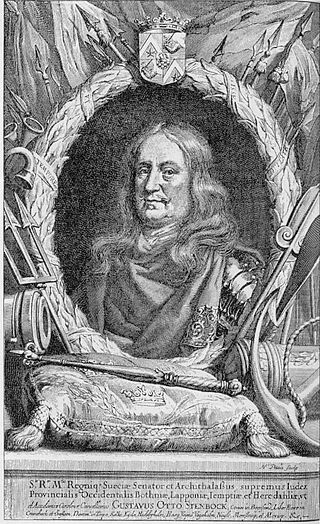
Gustaf Otto Gustafsson Stenbock was a Swedish military officer and politician.
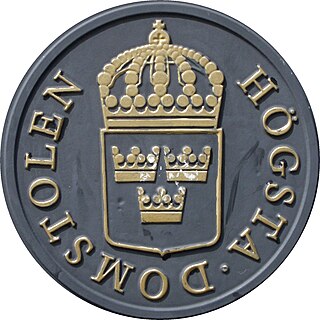
The Supreme Court of Sweden is the supreme court and the third and final instance in all civil and criminal cases in Sweden. Before a case can be decided by the Supreme Court, leave to appeal must be obtained, and with few exceptions, leave to appeal can be granted only when the case is of interest as a precedent. The Supreme Court consists of 16 Justices who are appointed by the government, but the court as an institution is independent of the Riksdag, and the Government is not able to interfere with the decisions of the court.
Angerstein is a surname. Notable people with the surname include:
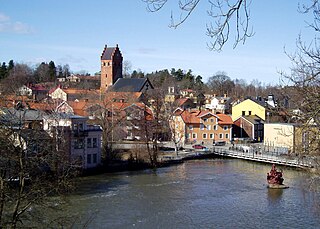
Torshälla is a locality situated in Eskilstuna Municipality, Södermanland County, Sweden with 7,612 inhabitants in 2010. It is mainly known for steel manufacturing, centered on the Nyby Bruk steel mill, and also for its historic old town centre.

Creutz is a Swedish noble family with the title friherre with its roots in Swedish-governed Finland. The family, both a branch of counts and a baronial branch, continues in Finland and Sweden.

Swedish art refers to the visual arts produced in Sweden or by Swedish artists. Sweden has existed as a country for over 1,000 years, and for times before this, as well as many subsequent periods, Swedish art is usually considered as part of the wider Nordic art of Scandinavia. It has, especially since about 1100, been strongly influenced by wider trends in European art. After World War II, the influence of the United States strengthened substantially. Due to generous art subsidies, contemporary Swedish art has a big production per capita.

Reinhold Rücker Angerstein, born October 25, 1718 at Vikmanshyttan, dead January 5, 1760 in Stockholm, was a Swedish metallurgist, civil servant and entrepreneur.

Vikmanshyttan is a locality situated in Hedemora Municipality, Dalarna County, Sweden with 843 inhabitants in 2010. On site the Steelworks Museum of Vikmanshyttan is maintained as a museum of regional industrial history.

Vira bruk is a village and an historic iron works in Österåker in Sweden.

The Hammarskjöld family, also known as Hammarskiöld family, is a Swedish noble family, enrolled in Riddarhuset with the number of 135.

The Grill family are noted for their contribution to the Swedish iron industry and for exports of iron and copper during the 18th century. Starting as silversmiths and experts on noble metals the Grills became engaged in a wide range of businesses. After 1700 the family began its rise to prominence. They owned ironworks, while operating wharves, and importing material related to shipbuilding. The Grills benefited from mercantilist policy. With a positive balance on their account the Grills became engaged in banking, also in the Dutch Republic; around 1720 in the market for government liabilities and then mediating large credits and clearing international bills of exchange. The Grills had significant influence with the Swedish East India Company (SOIC); three members became directors of the SOIC and the Grill firm traded as members of the SOIC and privately.
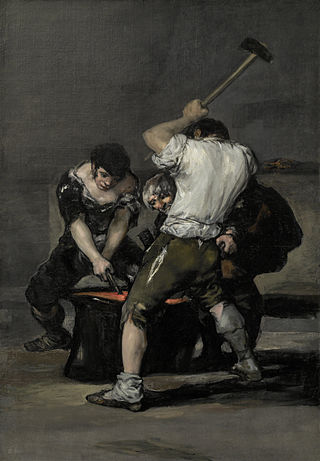
Carl Roth II was a Swedish ironmaster who lived between the 18th and 19th centuries. He is best known for owning two ironworks in Karlstad Municipality, Värmland County, Sweden: Duvnäs (Duvenäs), and Nedre Fösked (Föske).

Carl Reinhold Roth was a Swedish businessman and ironmaster who lived during the late 17th to mid 18th century. He is best known as the first ironmaster named Roth at the ironworks in Ludvika, Sweden. Reinhold was in his time one of Stockholm's more prominent businessmen. He also owned Sunnansjö ironworks and estate, and Skogsegen, devoted himself to the nascent sawmill industry, and was ship-owner of the Augusta.

Abraham Danielsson Hülphers (1704–1770), also known as Abraham Hülphers the Elder, was a Swedish early industrialist, and politician.

Anders Angerstein (1614-1659), also called Andrae Angerstein, was a German-Swedish ironmaster.

Wohlgebogen Jacob Tersmeden was a Swedish nobleman, ironmaster, assessor and member of the Riksdag of the Estates representing the House of Nobility, and brother of renowned diarist Carl Tersmeden.

The Düben family is a Swedish family originally from Saxony, Holy Roman Empire, whose members were elevated to the Swedish nobility, that rose to prominence with Andreas Düben, an organist to the German Church in Stockholm, Swedish Empire.
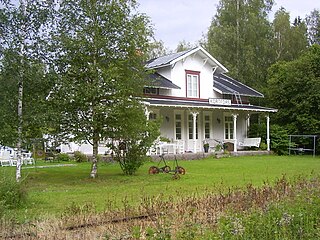
Kortfors is an urban settlement by the railway, situated in Karlskoga Municipality, Örebro County, Sweden. The settlement is located east of Granbergsdal Ironworks, northeast of Karlskoga and southwest of Nora.
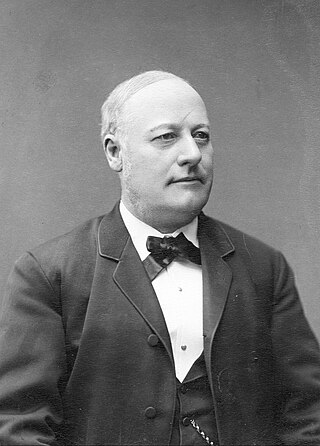
Victor Theodor Engwall was a Swedish industrialist, merchant and philanthropist. He founded Vict. Th. Engwall & Co, predecessor to Gevalia, the largest coffee brand in Sweden.

Johan Gustaf Helin or Johan Helin IIIII was a Swedish industrialist, businessman and politician. He was the founder of Spirit Factory Petterberg PR Borås, Sweden's largest spirit producer during the late 19th century. He was the sixth patriarch of the Helin family.





















